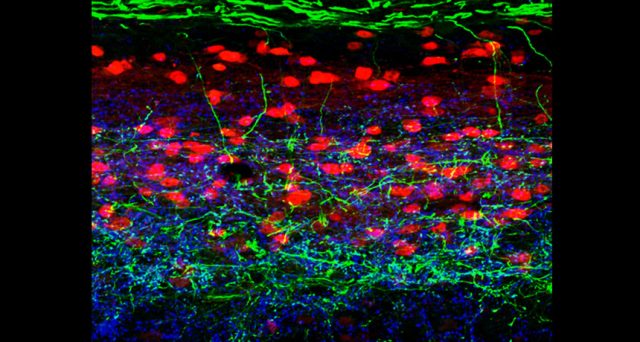MI weekly selection #153

Nerve cells that block itches in mice
Scientists have found nerve cells in mice that can block itches caused by a light touch, which could one day lead to treatments for people suffering from chronic itch problems. Researchers genetically engineered mice without those spinal cord nerve cells, producing rodents that had the urge to scratch all the time. When exposed to a light touch, the mice would scratch more than regular mice but would respond normally to pain and itch-causing chemicals, suggesting that the body has a separate mechanism to detect itches from touch.
Skeleton of ancient gibbon-like creature offers hints of ape evolution
The partial skull and skeleton of a small ape that lived 11.6 million years ago in what is today Spain is offering researchers unexpected clues about the evolution of modern apes. Pliobates cataloniae has characteristics of both lesser apes, such as modern-day gibbons, and great apes, such as modern-day gorillas and humans, but because of the scarcity of older specimens related to a common ancestor, it’s difficult for scientists to determine what was inherited and what was coincidental.
Dark matter may be linked to demise of dinosaurs
Dark matter may have had something to do with the comet strike linked to the demise of the dinosaurs 66 million years ago. Researchers have created a model that suggests the existence of dark matter disks within galaxies that the solar system cycles through every 35 million years, possibly disrupting the Oort cloud where comets are thought to be produced. The timing “comes reasonably close; it’s not a perfect fit, but it’s one possibility,” said Lisa Randall, one of the researchers.
Tiny bird’s fossils suggest rapid evolution after dinosaurs died out
The fossil remains of a newly discovered species of small bird that lived around 62 million years ago holds clues to the rapid evolution of birds after the dinosaurs died out when the Cretaceous period ended. The fact that the now-extinct bird, considered to be the oldest known specimen of a modern bird in North America after the dinosaurs’ extinction, was alive when it was suggests other modern birds evolved earlier than once believed.
4-legged robot handles all terrain efficiently
Twelve actuators and 50 sensors help a four-legged robot maneuver over obstacles and even run across challenging terrain. The dog-like device developed by the Swiss Federal Institute of Technology in Zurich is also designed for practicality: It’s small and simple enough to be deployed by one person and able to run for hours.